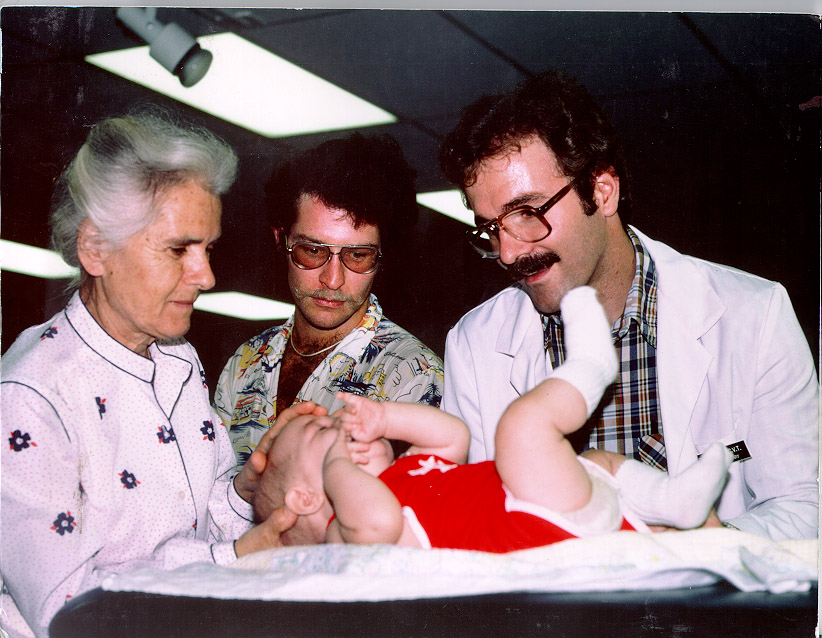In at least 80% of children with developmental delays,
including attention deficits and autism, there is a history
of traumatic birth. In each diagnosis there are
manifestations of various aspects of cerebral dysfunction,
which in simple terms mean that the brain is not functioning
as efficiently as it should.
 The
brain is contained within the bony skull, which at the time
of birth is designed to accept the temporary compression of
the birth canal, and expand fully when the baby cries
immediately after birth. The lower end of the central
nervous system is located within the sacrum, the large bone
forming the back of the pelvis. This, too, is designed to
absorb the compressing forces of the contracting uterus, and
then be restored by bodily movements after birth. The
vertebral column protects the spinal cord connecting the
head and the pelvis.
The
brain is contained within the bony skull, which at the time
of birth is designed to accept the temporary compression of
the birth canal, and expand fully when the baby cries
immediately after birth. The lower end of the central
nervous system is located within the sacrum, the large bone
forming the back of the pelvis. This, too, is designed to
absorb the compressing forces of the contracting uterus, and
then be restored by bodily movements after birth. The
vertebral column protects the spinal cord connecting the
head and the pelvis.
Problems of labor and delivery may compromise these
structural areas and thus disturb the nervous system within,
thus interfering with its physiological development. Any of
the following could be problematic:
- False labor before real labor began
- Premature rupture or leakage of membranes
- Induction or acceleration of labor by use of
medication
- Presentation of baby in other position than face
down
- Very long (>18 hours) or very rapid (<3 hours)
labor
- Epidural anesthetic
- Forceps or vacuum extraction
- Cord around the baby’s neck one or more
times
- Severe slowing of baby’s heart
- Period of uterine inertia, i.e. contractions stopped
or slowed
- Cesarean section delivery because of lack of
progress
The condition of the newborn baby or infant can also
provide evidence of the health of its nervous system. Signs
of potential difficulty:
- Delay in sucking of more than 24-48 hrs.
- Vomiting or spitting up after feeding
- Arched back or throwing head back when held on
shoulder or side
- Asymmetrical motion of arms or legs
- Spells of inconsolable crying
- Lack of sequence or missing stages in motor
development going from: rolling over, crawling flat on
floor, creeping on hand and knees, cruising around
furniture, and walking at approximately one year
Any of these signs in the baby suggest that some areas of
the central nervous system have been comprised. It is true
that sucking may be established in a day or two or more, and
that vomiting may stop in a month or two. The arching of the
back and extension of the head may be less obvious when
progression is made to standing and walking, but then
toe-walking may be apparent.
Children of school age who manifest problems may already
have been subject to a variety of medicinal interventions.
They may also have perceptual dysfunction’s that
interfere with visual and auditory skills. These children
are in dire need of structural treatment to restore the
musculoskeletal integrity of the whole body.
A comprehensive osteopathic approach with precise,
gentle, restorative manipulative therapy can help these
children immeasurably. The general level of well-being, as
well as neurological function, will significantly improve.
Adjunct therapies, such as vision and auditory, tutoring and
a well-balanced diet of whole, natural foods with carefully
selected supplements will then be far more effective.
Structural dysfunction resulting from birth trauma can be
corrected early so that neurological development progresses
satisfactorily. Then academic, behavioral and developmental
problems can be averted by establishing or restoring optimal
anatomic-physiologic integrity. Therapeutic measures can
teach a child how to use the body efficiently. When you have
your next baby, have an osteopathic physician provide a
though evaluation during the newborn period. This is the
essence of prevention.